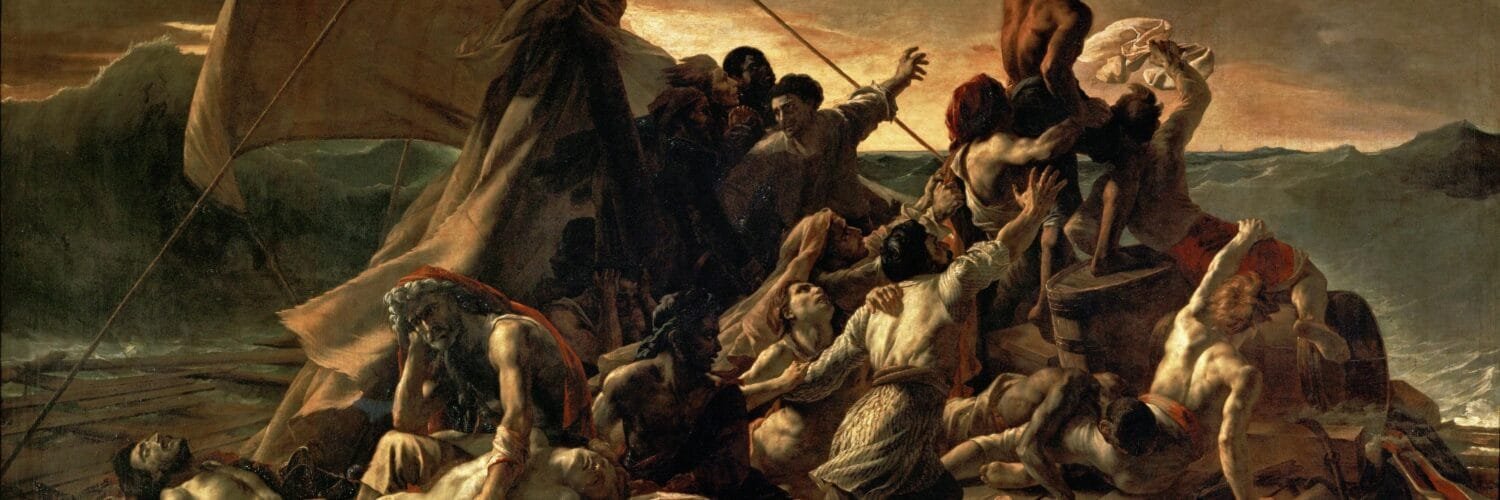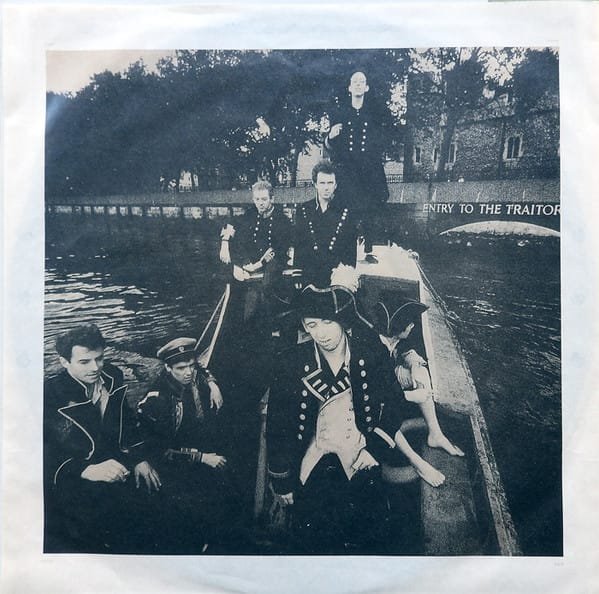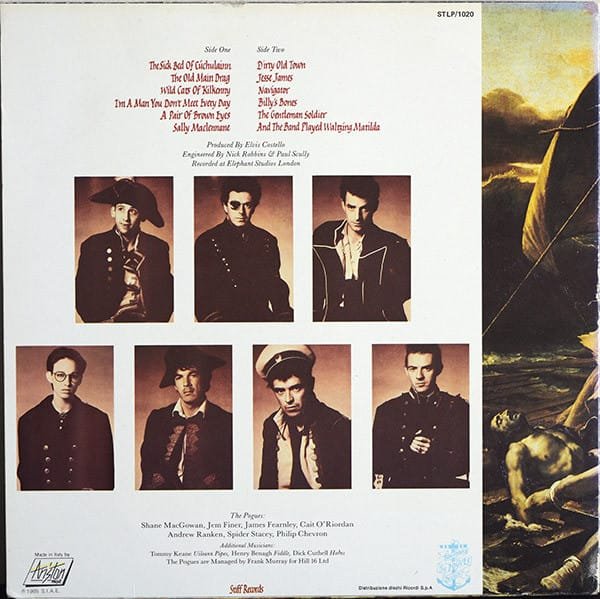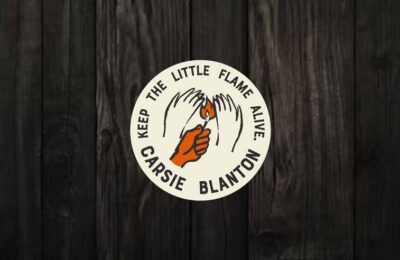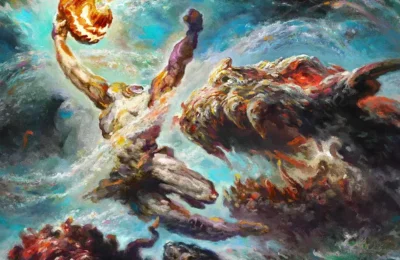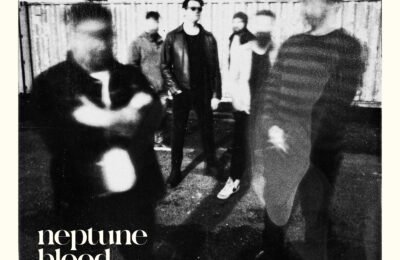When The Pogues released Rum, Sodomy & The Lash in 1985, they didn’t just make a statement through music, but also through an unforgettable cover art—a parody of one of France’s most iconic Romantic paintings. To understand its impact, we need to go back to the original story behind Géricault’s The Raft of the Medusa…
The Wreck of the Medusa
1816. After many twists and turns on the dismal plains of Waterloo, Napoleon is exiled, and Louis XVIII takes his turn on the throne of France. England, having annexed the French colony of Senegal, returns it to the newly reinstated King, whom it now considers legitimate. And so, on June 17th, a small fleet departs from the port of Île d’Aix, led by the Méduse. The frigate, commanded by Hugues Duroy de Chaumareys, carries Colonel Julien Désiré Schmaltz —the newly appointed governor of Senegal—, a couple hundred passengers—French aristocrats, scientists, settlers—and more than a hundred sailors and soldiers.
But the Commander, a royalist nobleman, has next to no real experience in the French Navy. His officers and crew mistrust him—and for good reason. Tensions grow and inevitably lead to the wreck of the Méduse on July 2nd, on the Arguin Bank off the coast of Mauritania. The 250 high-ranking passengers escape in 6 lifeboats. Meanwhile, about 140 sailors are crammed onto a raft 20 meters long and 10 meters wide, tethered by a rope to the boats. But the rope “mysteriously” snaps —almost certainly helped along by someone keen to get their noble backside to safety.
The raft drifts off—and of course, the lifeboats row off, never looking back… Thirteen days later, a passing ship called L’Argus spots the raft drifting at sea. Of the 140 abandoned men, only 15 are still alive. They later confess they survived through cannibalism. The weaker ones either died, committed suicide, or worse… The stronger endured — however possible. Back on French soil, the story gets out and turns inevitably into scandal. Captain de Chaumareys is tried and sentenced to three years in prison.
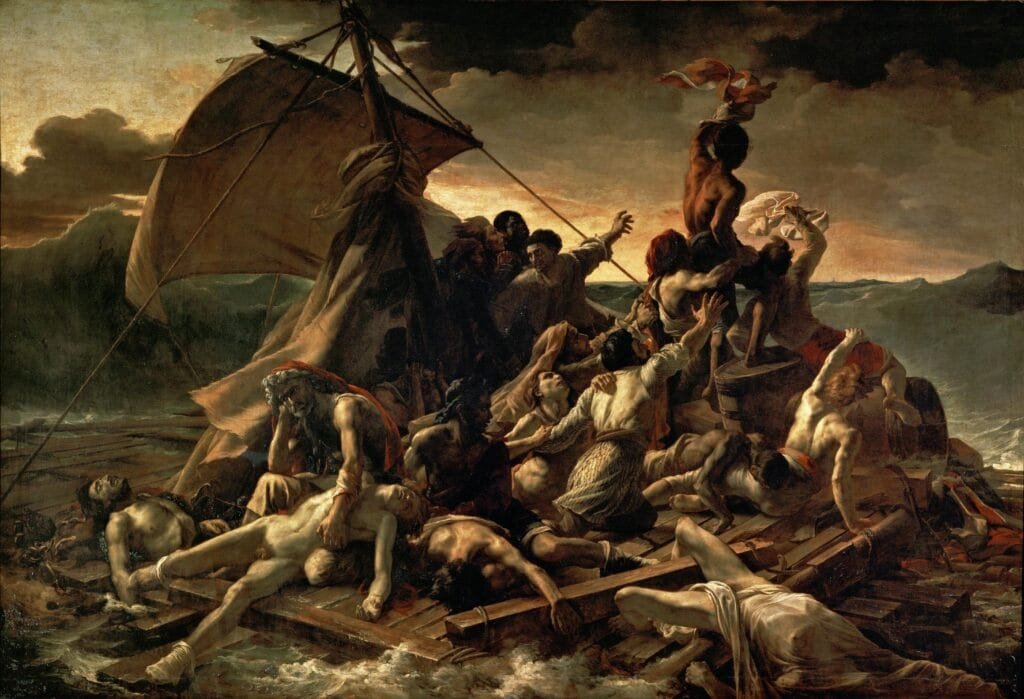
The Raft of the Medusa by Géricault
At the 1819 Salon, Théodore Géricault, a young Romantic painter, exhibits his third major work: “The Raft of the Medusa“. The painting is meticulously crafted. But what really hits home is the subject matter: raw, political, and haunting. Géricault’s choice of theme was no accident. The scandal had deeply affected him—like most of his compatriots. But the authorities were trying to cover it up, so he decided to preserve it forever on canvas. The scale is monumental —5 x 7 metres.
Géricault worked relentlessly on it for two years, researching accounts from survivors, asking some to pose for greater realism. He also requested a raft model from a surviving ship’s carpenter. The painter even studied corpses—bodies of the condemned—to capture the pallor and decomposition of death with brutal accuracy.
Géricault faced pressure, but never backed down. The painting was met with resistance. It made people uncomfortable. Today, The Raft of the Medusa is one of the Louvre’s most famous works—a symbol of Romanticism’s fierce engagement with reality.
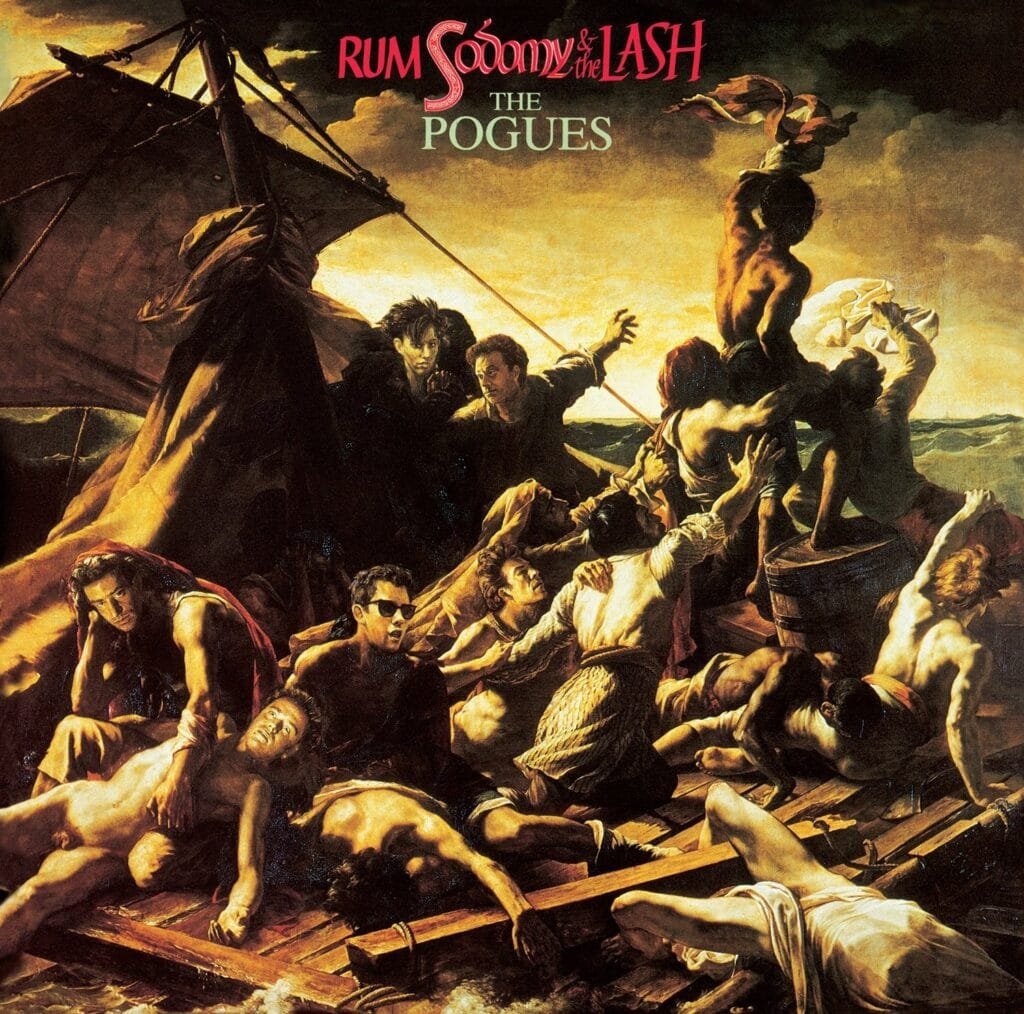
“Rum, Sodomy & The Lash”: the Pogues’ version
1985. Over 150 years later, Shane MacGowan and his gang are preparing their second album: Rum, Sodomy & The Lash. The Pogues are fascinated by Géricault’s painting, which they decide to parody for the album cover, after a suggestion by Marcia Farquhar —Jem Finer’s wife. Artist Peter Mennim painted the faces of each member over some of the painting’s original figures —except for Philip Chevron, who just joined the band.
The cover reinforces the nautical theme that runs throughout the album. The Pogues play traditional Irish music—the raw, grassroots kind played during seisiún in pubs, filled with Guinness, whiskey, and song. Among the drinking songs, you often find sea shanties or songs that resemble them. Beyond these stylistic choices, the album itself oozes naval tradition—even in its title. Rum, Sodomy & The Lash is a cheeky jab at Winston Churchill, who once said: “Don’t talk to me about naval tradition! It’s nothing but rum, sodomy, and the lash!” To round out the joke, the band is pictured in Royal Navy uniforms on the inner and back sleeves of the record.
A Deeper Meaning
But there’s more to the artwork than just seafaring nostalgia. Just like Géricault’s painting, the Pogues’ album cover carries a deeper political and social charge.
After all, the scandal that the young painter aimed to immortalise stemmed from class struggle. The workers toil, while the upper classes reap the rewards, leaving only crumbs behind. It was true with the Méduse, where the 250 privileged passengers abandoned the 130 sailors who had served them to a certain death. It’s also true in Thatcher’s UK, where the lower class were faced with contempt. It’s still true for war veterans who return home with missing limbs and see others bask in the glory —if there is any such thing. That’s the real story behind Rum, Sodomy & The Lash: misery, addiction, and oblivion. Every song, no matter how rousing, tells a heartbreaking tale.
Final thoughts
What Géricault couldn’t have predicted is that the tar he used in his paint medium would slowly darken the entire canvas over time—a real dilemma for today’s restorers, who are powerless to stop it. Ironically, “The Raft of the Medusa” may not be as eternal as he had hoped. Then again, he surely never imagined it would one day inspire The Pogues, 150 years later.
Ultimately, this landmark artwork suits the album perfectly. The parody and irreverence are funny, just as the music makes you want to dance. But scratch the surface and you uncover a layered message and deeper complexity—just like Géricault’s chef-d’œuvre, which continued to echo through the Pogues’ work, most notably in “The Wake of the Medusa,” written by Jem Finer in 1990.
